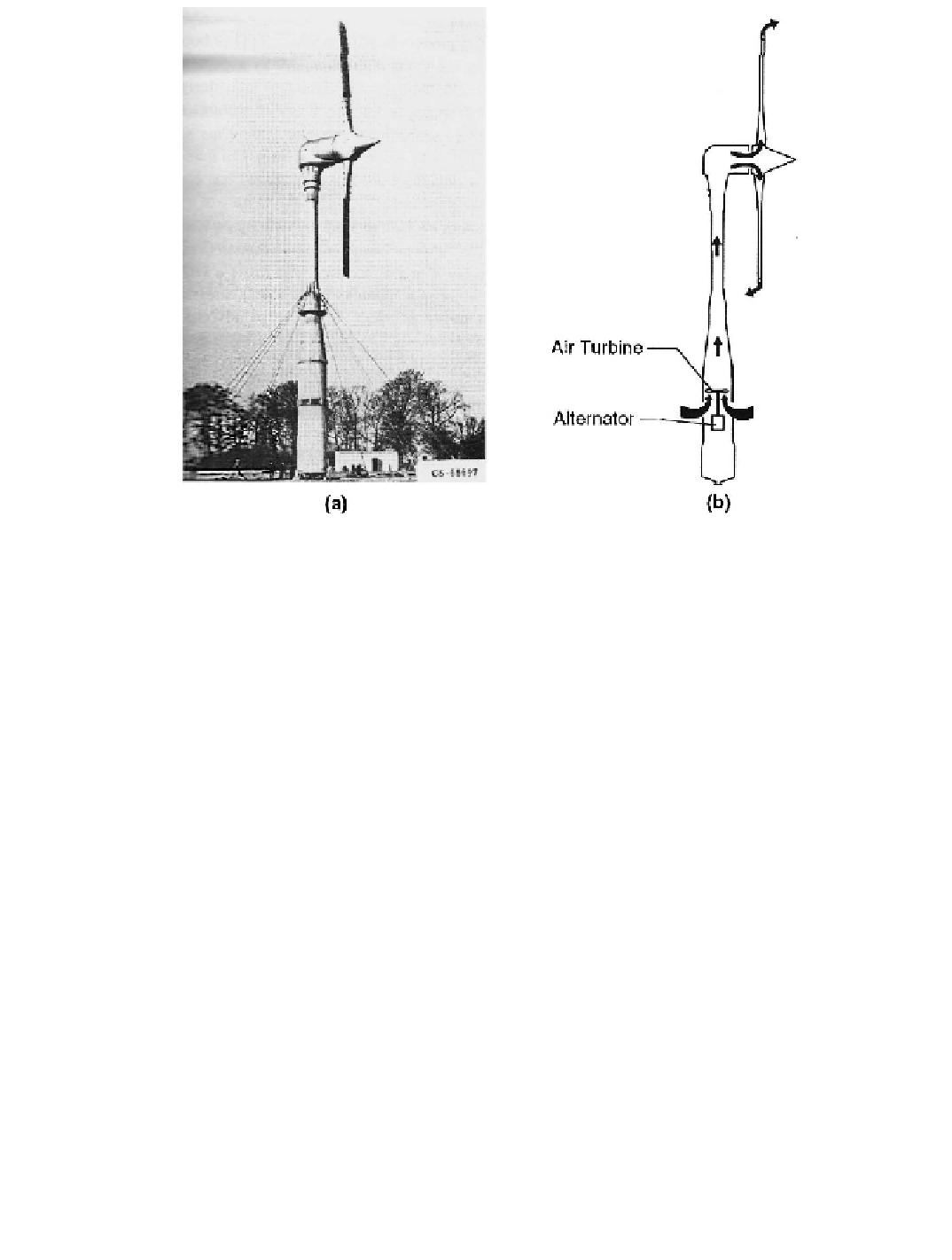Environmental Engineering Reference
In-Depth Information
Figure 3-4. The 100-kW 25-m Enield-Andreau turbine in the early '50s.
Hollow rotor
blades with tip vents drew air through a turbogenerator in the tower. (a) General view
(©1955, E.W. Golding; 1976, E.&F.N. Spon Ltd.; reprinted by Halsted Press, John Wiley
& Sons, Inc.)
(b) Diagram of the low path.
rotor diameter was initially 18 m, but this was reduced to 15 m after an accident in which
one of the blades struck the tower in a high wind. A series of modiications was required
to solve structural problems in the hub and resonant vibrations in the tower. Operation of
the
John Brown
wind turbine ceased in 1956.
Also in the early 1950's, a l00-kW HAWT 25-m in diameter was built by
Enield
Cables
and installed initially at St. Albans in the U.K. (Fig. 3-4). It was of the
Andreau
design, a unique concept in which mechanical coupling between the turbine and the
generator is eliminated by driving the generator pneumatically. The turbine rotor has
hollow blades with open tips and acts as a centrifugal air pump. As illustrated in Figure
3-4(b), air is drawn in through side vents in the tower shell, passing upward to drive an
enclosed high-speed air turbine coupled directly to the generator. After lowing through the
rotor hub into the hollow turbine blades, it is inally expelled from the blade tips. While
the
Enield-Andreau turbine
operated successfully, it had a low overall eficiency. High
drag losses in the internal low paths were suspected to be the cause. The turbine was later
moved to Algeria, where it is said to have operated intermittently for about 180 hours. It
was shut down permanently after suffering bearing failures at the blade roots.
A third 100-kW wind turbine, built by
Smith (Horley) Ltd
., was installed on the Isle
of Man in the late 1950's and operated until 1963. The
Isle of Man
wind turbine was
relatively low in cost ($20,000 installed), and it pioneered two rotor design features that
have been used successfully in more recent times: control of peak power through aero-
dynamic stall of ixed-pitch blades, and blades made inexpensively from extruded alumi-
num. Operation ended in 1963 after damage to the blades in a severe storm.

Search WWH ::

Custom Search